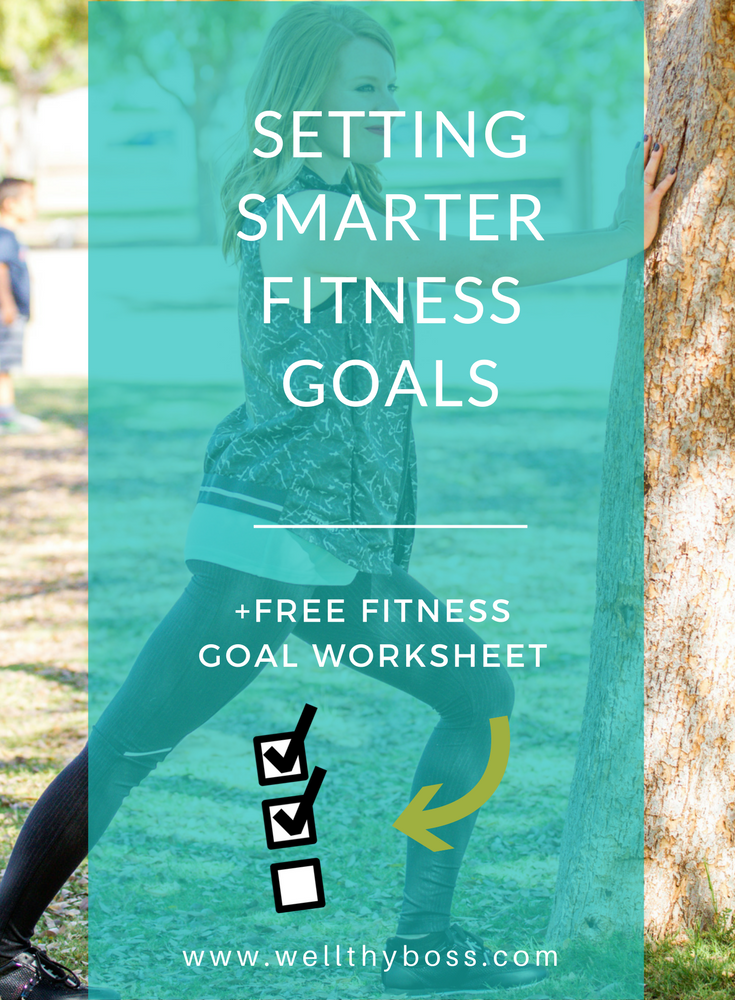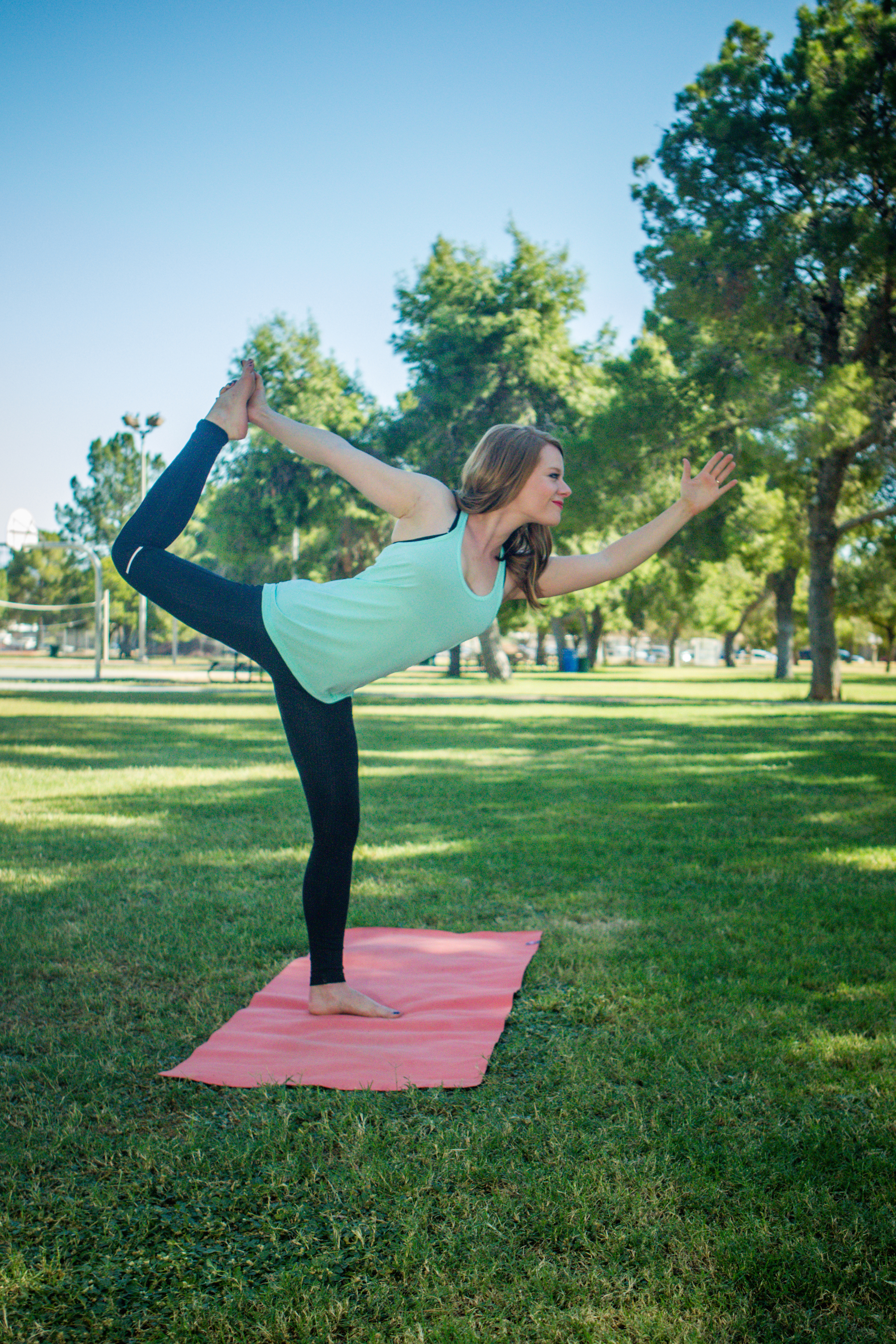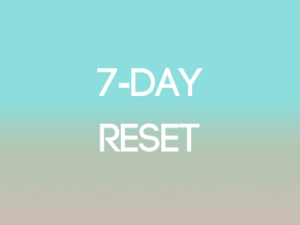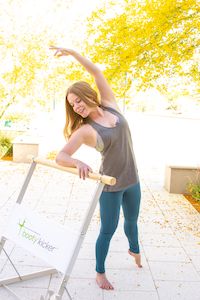
Podcast: Play in new window | Download
Subscribe: RSS
The road to good intentions doesn’t lead to anywhere.
Most of us are all too aware of this truth.
Adulting is tough, and for those of us who have the added responsibilities of running a businesses, just keeping up with basic personal intentions–like exercising regularly–is no small feat.
But setting better goals in the first place can go a long way in helping us ace our intentions and feel good about our results.
And nowhere is this truer than in setting smarter fitness goals.
Here’s how to set fitness goals that you are actually likely to stick with.

KNOW WHAT OUTCOME YOU’RE LOOKING FOR
You’ve gotta know your why. I mean, really get acquainted with it.
Many clients I’ve worked with have gotten a little confused around this one until we work together. They’ll set a goal without first connecting to the intended objective.
Before you pick a goal, you need to determine how achieving that goal will benefit your life–ie., the intended outcome.
Setting a goal to exercise 3X/week is great–it’s specific, it’s measurable–but it doesn’t tell me anything about why you’re motivated to do that particular thing.
Is it because you want to feel more confident in your clothes? Is it because you’re trying to get your blood pressure down ten points after the last visit with your doctor? Is it so you’ll have enough energy during your workday that you’re not downing an energy drink at 2pm?
These are the objectives, and the goal is just the route to achieve that objective.
There are dozens of reasons to work out–from reduced risk of disease, to being able to continue doing active hobbies that you love through old age, to sliding into your skinny jeans, to keeping sane during your stressful work week, to firing up your libido.
In order to set smarter fitness goals, you first need to identify the top 2 or 3 reasons that exercising regularly is going to make your life better.
It’s important to limit to just the most important reasons for you at the time, because those intended outcomes will inform the type of exercise you choose.

For example, if weight loss is your #1 intended outcome, you’ll probably want to include strength training with fairly heavy resistance to fire up your metabolism.
But if stress management is your #1 intended outcome and you absolutely love to hike but hate strength training, then setting goals around strength training might not serve your why.
CONSIDER YOUR CHALLENGES
Wishful thinking doesn’t do you any favors.
You need to set fitness goals around the life you actually have, not the life you wish you had.
Challenges could include limited time (which may, for example, rule out driving to that hour-long spin class that you love but takes 15 minutes to drive to and back), childcare constraints, inclement weather or lack of daylight during certain seasons, that 2-week stretch where you booked extra client appointments, etc.
Getting real about the challenges you could face also helps you set more realistic goals, so it’s important that you identify your main challenges–without letting yourself go down a rabbit hole of excuses!

CONSIDER YOUR RESOURCES
Though we’re much more prone to identify our challenges, identifying our resources at the moment can help us capitalize on an exercise type and/or schedule that makes the most of what we have.
This could be things like your HOA’s community fitness center, free Wellthy Boss workout videos like my 25-Minute Yoga + Cardio Circuit Workout Video, the fact that your husband offered to drive the kids to school this next month because of a change to his work schedule, leaving you with an extra chunk of time in the mornings.
DECIDE ON WHICH WORKOUTS YOU’LL DO AND HOW MANY TIMES A WEEK YOU’LL DO THEM
Now, we finally get to set our actual fitness goals!
The more specific your plan, the better. This could look something like the following:
- Walk the dog 2 miles every other day
- Do yoga + cardio circuit video 2X/week
- Go for a longer bike ride (6-8 miles) on the weekend
Yours, of course, will take into consideration your own objectives, challenges, and resources.

HAVE A PLAN “B”
Even with the best laid plans and the smartest fitness goals, life is still going to mess with you.
It may rain outside the morning you were supposed to walk the dog.
Your bike may get a flat tire.
Identifying what I like to call a “placeholder workout”–one that doesn’t necessarily burn the most calories or tick all the boxes of your intended outcomes–will help you stay consistent with an exercise habit.
Any workout is better than no workout.
Honoring every bit of effort we invest into our physical health will make us more likely to feel good and keep doing it over and over–through easy times and hard times alike.

RE-EVALUATE REGULARLY
One of the biggest reasons people quit exercising is having a disruption or change to their routine or circumstances–they move away from the gym they used to go to, their kids’ after-school schedule changed the pockets of free time they used to have, they get sick or injured, etc.
This is where regularly reviewing your intended outcomes, challenges, resources, and workout schedule on a regular basis really starts to pay off.
It could be next time around that rehabbing an injury becomes your #1 fitness objective, which would totally change the type of workout you want to do.
Or maybe the fact that it will start getting lighter earlier in the day means you can start to schedule in some early-morning hikes, which you may be more likely to do because you enjoy the time out in nature.
To help you out, I’ve created a special “Fitness Goal Setting Worksheet” for you to identify smarter fitness goals wherever you are at the moment.
I recommend reviewing it on a monthly or quarterly basis, or at least every time you go through a major change to your routine.
Can’t wait to hear how you ace your fitness goals!
FREE FITNESS GOAL-SETTING WORKSHEET




